COURTESY: KiwiFlyer Magazine
Magazine of the New Zealand Aviation Community
SOURCE: Issue 50 – 2017 #1
SUBSCRIBE: http://www.kiwiflyer.co.nz/
CREDITS: Michael Norton – Editor | Publisher KiwiFlyer Magazine
Flight Review
There’s a new, NZ, version of the Safari helicopter about town. And it’s much nicer to fly. About three years ago, KiwiFlyer sampled the previous edition of Bruce Belfield’s home-built Safari helicopter for a feature article in Issue 33.
For a variety of reasons, supported by second and third opinions, we concluded it was probably the pick of the rotary home-builts available in the recreational aviation market. If there was a niggle at that time, it was our perception of a heavy control feel – which we likened to an R44 with the hydraulics off.
You adjusted to it after a while, but the initial flight for pilots current in certified light helicopters would probably involve a degree of over-controlling in response to the friction and feedback present within the Safari’s systems of then. And now? Very much better.
That’s not just KiwiFlyer’s view after a brief sortie around Bruce’s patch at Te Awamutu either. Other CPLs who have tried the new version concur.
There are 12 CHR Safari helicopters on the New Zealand register. Produced as a kit-set by Florida company CHR International, the Safari has the outward appearance of a scaled down Bell 47. Indeed when first developed by Canadian Home Rotors, the aircraft was named the Baby Belle.
It was later changed to Safari and subsequently in 2009 CHR International acquired the business and moved it to Florida. Testament to the design of the Safari is the number of hours commonly flown on them. Several of the New Zealand examples have many hundreds of hours on their HOBBS.
All too often home-built helicopters change hands with very few hours on the clock, in main due to their owner/builders discovering that flying them wasn’t quite the good experience they were expecting.
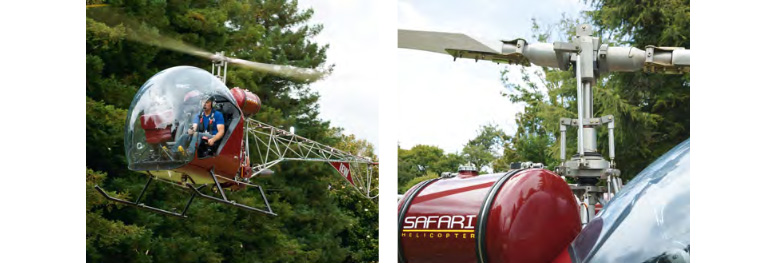
LEFT: Brand new Safari 400 being test flown by Bruce.
RIGHT: Main rotor blades are composite, made in the US.
That’s not the case with the Safari helicopter, whose owners frequently talk of adventures into mountains and bush on hunting, fishing and holiday trips. One of the confidence inspiring aspects of the Safari is its rugged and traditional design.
The helicopter air frame is of welded steel, the engine is a Lycoming, and everything is on show for inspection. There’s also plenty of room for two people in the cabin, a decent useful load and good power reserves.
Bruce Belfield became a distributor for the helicopter company after acquiring his kit in 1998, forming South Pacific Home Rotors in 2002. A fitter/turner and machinist by trade, his skills were a perfect match for the amateur-built aircraft category the Safari fits in to.
Those skills have also been put to good use for subsequent owner/builders with numerous improvements to the design originating from Bruce’s workshop and now distributed to owners around the world as well as the United States factory.
Safari 600 Specifications and Performance
Powered by a Lycoming O-360, the standard factory Safari 400 will cruise at 74kts, with a VNE of 87kts or 100mph. A typical ship weighs around 1000lbs empty and with a MAUW of 1650lbs, useful load is in the order of 650lbs. Climb performance is 1000 feet per minute to a ceiling of 10,000 feet.
The twin fuel tanks hold a total of 106 liters. IGE hover limits are quoted as 7000 feet and OGE as 5000 feet. The 26ft diameter main rotor is of composite construction and the tail rotor with a 4 foot diameter is made from strong and light weight titanium.
South Pacific Home Rotors
Bruce Belfield’s original Safari 400 was the first-of-type to fly in New Zealand, back in the year 2000 when it also deservedly gathered up several home-building awards from the local sport aviation scene.
Over the years since, Bruce has worked extensively to support other builders in New Zealand as well as to make numerous improvements to the helicopter’s design and flight characteristics, several of which have been incorporated by the factory into their standard kit – one example being titanium tail rotor blades.
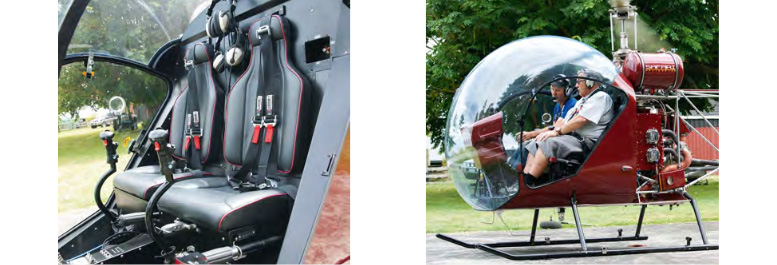
LEFT: Everywhere you look, craftsmanship is outstanding.
RIGHT: Proud new owner Colin Wade, with Bruce.
Another improvement first fitted to the helicopter by Bruce and then adopted by the factory has been an electronic governor system. Yet another is his Kiwi-Pod luggage system.
Now his latest personal Safari incorporates so many ‘Bruce version’ improvements that it has become a step change from the standard factory offering. Bruce has thus unofficially ‘named’ it the Safari 600. More on that later.
Throughout the course of his work on the Safari, Bruce has acquired an international reputation as the go-to person for ‘setting up’ the helicopter. In that regard he’s recently returned from a few weeks in Costa Rica working for an owner there, and he often travels to Australia to support owners in Sydney.
Several of Bruce’s ‘enhancements’ are in regular demand by other new and existing owners throughout the world, his exhaust and inlet manifold systems being a common example.Bruce has also regularly attended Oshkosh and Sun & Fun as a guest of the factory to meet prospective customers and act as a factory demonstration pilot for them.
Safari 600 Helicopter Kit Options
The Safari helicopter kit fits into the amateur-built category, so if you do take the option to build it yourself from a basic kit, the 51% rule means that you can also maintain it yourself afterwards.
The most popular option in Australasia is the ‘Down Under’ Starter Kit, comprising a majority of the basic components, but leaving it to the owner to sort their own engine, cabin fit-out and instruments.
In the kit are: Fabricated cabin frame and tail boom, tail rotor driveshaft, fuel tanks, basic control package, engine/rotor tachometer, rotor head and blades, main transmission, a conversion kit to mount the aircraft certified engine vertically, and tail rotor assembly and blades.
The next option up is the Safari 400 kit which includes the O-360 engine, shroud and exhaust, welded fuselage with sheet metal installed, powder coated frame and mounted bubble, leather seats and carpet, instruments and pod, governor, trim and frictions, and all the necessary small parts and raw materials to complete your aircraft.
A ready-to fly option is also available which Bruce can build for you at his Te Awamutu base, where he has support available from Central Aero Engineering at Hamilton for any engineering supervision required.
Bruce says that most of his New Zealand customers typically acquire a starter kit including frame and bubble. Then they source the engine and instruments from a timed-out R22 (or a wrecked one). Although the fabrication required to complete a kit is all uncomplicated, there is a lot of it to do.
No welding is required in the Down Under kit. Bruce also says that all parts supplied are very accurately produced and fit together as they should, thanks to extensive investment in jigging and CNC production at the factory.
He says that an honest assessment of the time required to complete a Down Under kit is 1000 hours, this including the ‘thinking’ time and being easily achievable by a builder with basic skills.Any parts can be requested ready-made from the factory or via Bruce and he says there is a long list of options to make the job easier if desired.
New Zealand customers of course have a major advantage to hand in that Bruce is here with a demonstration aircraft, a wealth of hands-on experience for building, setting up, and flying the type, and the capability to assist the build process from start to finish.
The Safari 600
Bruce’s latest edition of the Safari helicopter build is not an official factory version, but if customers wish then he can fabricate the same modifications for their aircraft.
In addition to the list of ‘Bruce’ improvements that have become standard (or nearly so) Safari fitment, the ‘600’ has an extensively reworked control system. Working closely with Paul Waterhouse at Central Aero Engineering, Bruce has made numerous small changes that together accrue towards making flying the aircraft an altogether better experience.
Paul currently maintains five Safaris on behalf of their owners and says, “it wasn’t a secret that the control characteristics haven’t been perfect. The cyclic and collective forces were quite heavy and prone to leading new Safari pilots towards over-controlling.”
Paul and Bruce did “a lot of analysis and staring at other two-bladed rotor heads,” an exercise that culminated in changes to pitch link arm alignment and various other components – particularly also with a view to managing friction in the control system. In Paul’s words, “it’s pretty close to right now”.
Paul also says, “I’ve got no hesitation at all to fly in one.” Paul’s latter statement is qualified by him adding that there are very few home-built helicopters that achieve an acceptable standard for him to fly in.
Other design changes include canting the main rotor transmission forward slightly, an all-titanium tailboom – for strength and weight savings, new pedal linkages which are more positive in action, a widening of the internal frame leading to more cabin room, angling the cabin floor to be flat at cruise speed, a transmission oil cooler which now provides for an indefinite hover time, and a new collective actuator system which operates in descent at <18” MAP to help prevent the collective wanting to rise (a previous Safari niggle).
Compared to the standard model, the Safari 600 is 50 lb lighter. Bruce says that one-up, it climbs easily at 1200 fpm.
Flight Experience
As well as a brief fly of the Safari 600 ourselves, KiwiFlyer also spoke with local commercial pilot Nick Lane (4 years and approaching 1000 hours on his CPL), who is familiar with both the Safari 400 and new 600 versions.
A pre-flight is straight forward, with virtually everything you might want to inspect being clearly on show right in front of you. Climbing aboard is equally straight forward so long as you remember to put your head in the bubble and follow with your body – it simply won’t work the other way around unless you’re less than four feet tall.
Seats are very comfortable, there’s a heap of elbow room, and leg room is equally generous. I’m a touch over 6 foot and have always found the pedal position in Robinson R22s or Hughes H300s right on my comfort limit – and occasionally beyond it, resulting in cramping muscles which aren’t conducive to hovering a helicopter in a gusty crosswind. Not so in the Safari.
Bruce’s floor and pedal modifications suited me very well.Checks are all standard practice and the venerable Lycoming roars into life. As an aside I did also observe Bruce flying from the ground – and this is a noticeably quiet helicopter.
The noise footprint is unlikely to ever bother neighbors.Bruce flew a circuit to reacquaint me, then it was my turn. Three years ago, that was a bit of a humbling experience and I’ll admit it took me the best part of an hour to get to grips with the aircraft.
The difference this time was significant. In the same way that others who have flown the ‘600’ have found, a few minutes was enough. That’s mainly because the controls are much lighter and better balanced now. It’s a lot more like flying an R22 than previously.
Vibration levels and stick shake all seemed low too, suggesting a well ‘sorted’ machine. We depart for a local scenic and I also notice how much nicer the aircraft feels to just ‘fly around in’.
Bruce says that’s due to the helicopter mast adjustments and also in part to his tilted floor. Flying ‘on the numbers’ is easy and in the light breeze we’re flying in, Bruce can readily trim the helicopter for hands-off flight if he wishes.
Confirming my perceptions in a later discussion, Nick Lane observed that it ‘wants’ to fly at 60 kts now instead of 40 kts previously whereupon it always felt like you were forcing it to go faster.
Nick says in his view the controls are “much improved” and although, like many aircraft it has its idiosyncrasies, “once you’ve got a feel for it, it flies nicely.” He says to Bruce, via our discussion, “The way it is now is good. Leave it alone.”
In Nick’s view, and mine, someone with R22 experience and Robinson Safety Course currency, would transition to the Safari 600 quite well. Being in the experimental category, pilots require a PPL(H) to fly the Safari.
Most owners either have a license or acquire one in an R22 whilst building their aircraft. However Bruce says that pending a willing Flight Examiner (currently in the pipeline), it will be possible to undertake all one’s training in the Safari if desired.
For more information on this kit helicopter
One final testament to these aircraft, worthy of mention, is that full-cover insurance is now available with a reasonable excess and premium equal to or better than what most R22 helicopter owners would receive.
To find out more, contact Bruce Belfield at South Pacific Home Rotors on 027 696 5159 or 07 871 5699, by email: brucenik@xtra.co.nz or visit www.safarinz.com
The factory website is www.safarihelicopter.com
New owner profile: Colin Wade
Our visit to Te Awamutu coincided with an opportunity to meet new Safari owner Colin Wade, who was enjoying some time in his brand new helicopter with Bruce. A Cirrus SR20 owner/pilot, Colin is yet to commence his PPL(H) and plans to use the Safari for his training. We asked Colin about the motivation behind his new acquisition.
It was quickly obvious he is a passionate aviator, first flying with Max Clear and Bantams at Te Kowhai, before stepping up to a Sky Arrow, then Pioneer 300 and then a PPL in his Cirrus which he regularly flies between Te Kowhai, Pauanui and Great Barrier.
Colin has long been an aviation enthusiast and this year will attend Oshkosh for the 15th time, traveling (as always) on a Gaye Pardy tour which he and wife Sue have often helped run for Gaye.
It was at Oshkosh that Colin first met Bruce (when he was demonstrating the factory machine there). Colin says he went for a couple of flights and was hooked, telling Bruce to call him when he got home.
Bruce later landed his Safari at Colin’s front door and the deal was done, with Colin observing that Bruce’s workmanship was exceptionally good and confidence inspiring (KiwiFlyer agrees). Colin’s aircraft has been built up by Bruce and Colin over the last 18 months and has just had the mandatory 40 hours of test flying finished off by Bruce.
Colin says the Safari suited him very well with its manageable maintenance costs, decent useful load and power in reserve, and that he’s looking forward to a lot of local flying and being able to drop in on rural friends.
Congratulations on the aircraft Colin. It looks outstanding.

LEFT: All Safaris are fitted with NZ made titanium blades.
MIDDLE: Bruce is experimenting with the adjustable airfoil.
RIGHT: Very nicely designed and fabricated panel.






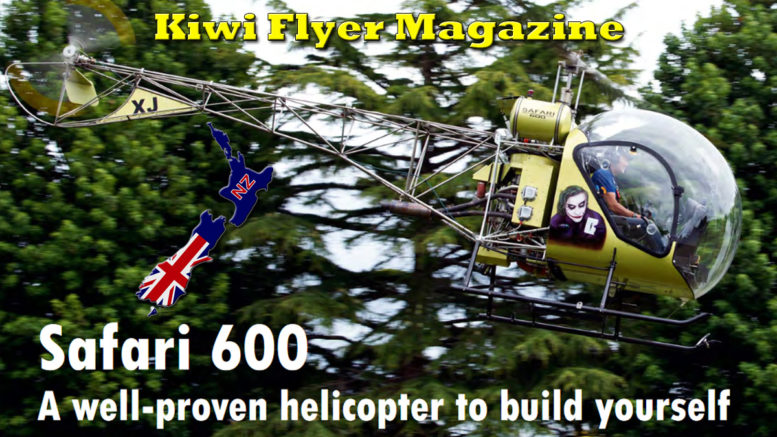
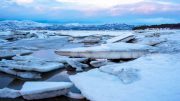
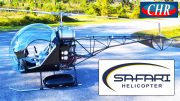
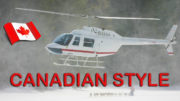
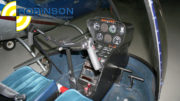
When will they have foldable rotor blades, to transport machine in a large box trailer etc? Russel Dart